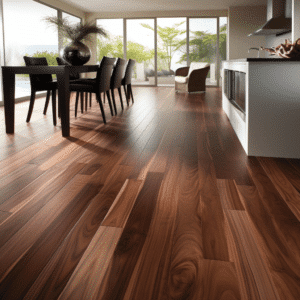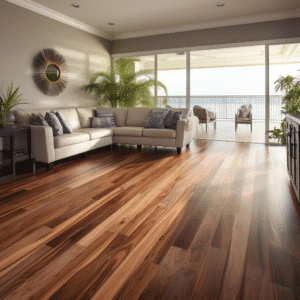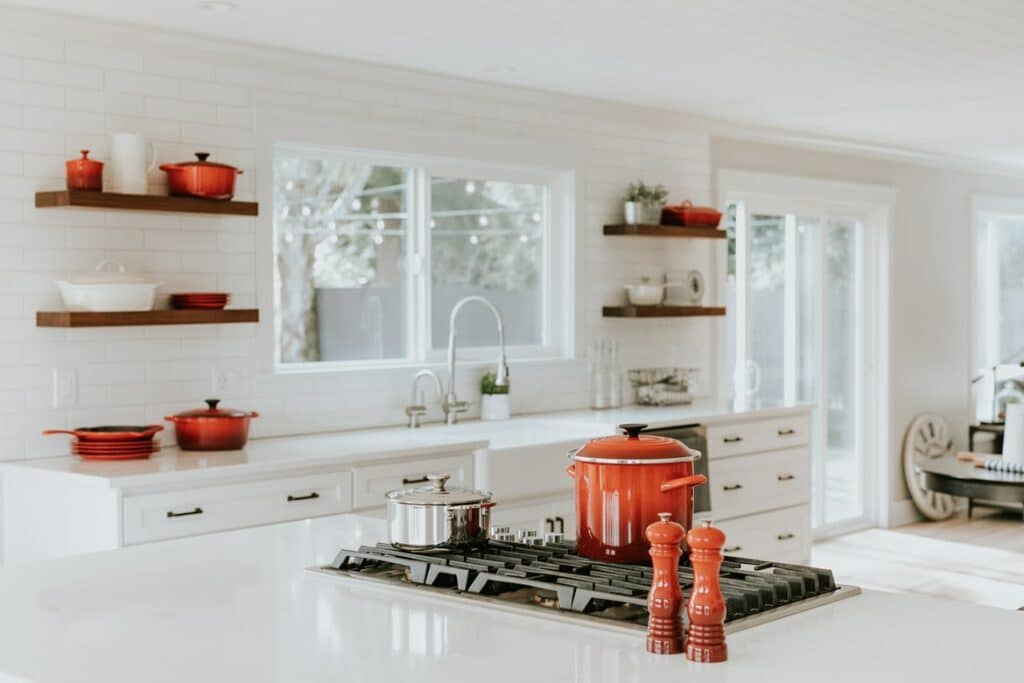Table of Contents
Acacia
Acacia and Walnut Hardwoods, With over a thousand species, Acacia, also known as wattle or thorn tree, showcases remarkable diversity and widespread presence.
It also commonly referred to as wattle or thorn tree, boasts over a thousand species.
Initially native to Africa and small parts of Australia, different species of Acacia can be found in basically all continents except Antarctica.
Acacia is one of the most significant trees to humans and many civilizations have practiced transcendent spiritual rituals with this tree species, associating it closely with aspects of their religions, superstitions, medicine, and culture.
Its ability to resist burning to charcoal also added to its mystical quality since wood is generally highly flammable.
In recent decades, due to its proliferation all over the world, it has become a popular and available choice for furniture and décor.
Walnut

Walnut trees are native to specific parts of Asia, the United States, and Mexico.
There are at least twenty species of walnut trees, among them, Butternut, Andean Walnut, Japanese Walnut, East American Black Walnut, and English Walnut.
Walnut trees are not considered a particularly available resource, especially for timber.
The fact that they are not large trees in terms of both length and girth, made walnut a rarity in woodwork. When it was actually used, its products came at a hefty premium.
The walnut tree has recently been cultivated for timber though initially walnut trees only became an option for lumber after the tree had outgrown its vibrant nut-producing years.
The species grown for wood today is the East American Black Walnut or the California Walnut.
Both trees will give you stunning furniture pieces though they do have some uniquely separate features as well that should influence your decision.
Acacia Vs Walnut: Which one is better?
Either hardwood is a worthy investment and as for which is better, it is really a matter of taste and preference.
It also depends on what kind of product you wish to make. Sculpting is harder and less aesthetically practical with Acacia while your cabin flooring would do better with the harder Acacia.
Here are some of the distinct features between the two products:
Color
Sapwood is light blonde and deep reddish-brown in acacia. Older trees have wider, darker heartwood and narrower, lighter sapwood.Most young Acacia furniture is lighter and softer.
Acacia trees can be deep red with a brown undertone, resembling a crimson block with a wide blonde ring.Due to its considerable variety, no two acacia blocks from the same tree are same. Acacia is colored, knotted, and has a unique texture. Rich brown walnut has black and blue undertones. Wood can be dull yellow.
Although less vivid than Acacia, walnut blocks are varied. Smooth grain with little knots. Acacia and walnut appear comparable after staining and working.
Beauty
Due to the dramatic nature of its colors and grains, Acacia furniture features clearly defined patterns of both light and dark browns and beiges. This can offer a captivating aesthetic that has a very natural but wild appeal.
Walnut has a more even majestic aesthetic owing to its even color and grain structure. The deep brown hues of walnut are imposing and grand making it a favorite for most office furniture.
Traditionally and even today, walnut has been used largely for ornate furniture pieces and striking artwork due to this aesthetic.
Acacia and Walnut Hardwoods is common to find walnut being used in the décor of high-end cars, homes, and offices for its opulent aura.
Hardness
Acacia has a denser grain than walnut which makes it the top contender for hardness between the two.
Acacia has a Janka rating of 1700 to 1750 depending on the specific species while Black walnut which is the most commonly used tree for timber has a rating of 1010.
Both hold up very well as materials for furniture despite this difference.
Malleability
Improved machinery and technology make woodworking easier. Acacia is tougher than walnut and difficult to mold and cut because to its complex grain structure.
Walnut is softer and more pleasant than Acacia, making it ideal for carving delicate designs into elegant furniture. The subtle carving on walnut blocks is unaffected by its softer grain.
Sustainability
Acacia, particularly the kind used in timber is abundant globally and fast-growing which means it is not in danger of depletion from lumbering.
Walnut trees are much rarer to find more so outside of the United States and in large quantities.
Many cultivars today are growing the Black Walnut for timber which is helping to proliferate the tree for timber. Both trees are sustainably available for lumbering.
Durability and Maintenance

Acacia and walnut are classified as hardwoods, which grants them remarkable durability and resistance to various forms of damage, including rot, fungus, water, and heat.
Both kinds of wood are also scratch-resistant and do not easily warp or bend. Both will easily last over five decades in stellar condition.
They require little to no maintenance and if you have bought them finished then no maintenance other than wiping down dust is necessary.
Acacia and Walnut Hardwoods they appear dry, which could happen after a number of years, a light coat of the appropriate polish should fix them.
Cost
You will spend a pretty penny for any hardwood and these two are no exception.
While Acacia may be harder and even more durable, walnut is scarce and is in high demand for specialty pieces and bespoke furniture.


